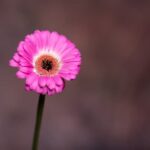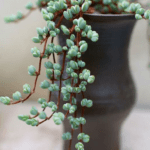Transforming the front of your house with a beautiful landscape can greatly enhance your home’s curb appeal and create a welcoming atmosphere. When it comes to landscaping in the shade, there are unique considerations and opportunities to explore. In this article, we will delve into landscaping ideas for the front of the house shade, providing you with inspiration and practical tips for creating a stunning outdoor space.
Shade is an important factor to consider when planning your front yard landscaping. It presents a unique set of challenges and opportunities, as certain plants thrive in shaded areas while others require ample sunlight. Assessing the amount and quality of shade in your front yard is crucial in selecting the right landscaping elements that will flourish in this environment.
In addition to evaluating shade, it’s essential to consider how layers of plants, hardscaping, pathways, entryways, lighting, and decorative accents can add depth and dimension to your shaded front yard. By carefully selecting these elements, you can create a visually appealing landscape that complements the architecture of your home while thriving in shady conditions.
Whether you prefer a lush oasis or a minimalist design, there are numerous options for personalizing your shaded front yard to reflect your style and preferences.
Assessing the Shade
Before beginning any landscaping project for the front of your house, it’s crucial to assess the amount and quality of shade in your yard. The presence of shade can significantly impact the types of plants that will thrive in your landscaping, as well as the overall design of the outdoor space.
One important tip for evaluating the shade in your front yard is to observe the area at different times of day, taking note of which areas receive direct sunlight and which are more shaded. Additionally, consider any obstacles such as buildings, trees, or other structures that may cast shadows on specific parts of your yard.
Identifying potential challenges and opportunities for landscaping in shady areas is another essential aspect of assessing the shade in your front yard. While some homeowners may initially view shade as a limitation for their landscaping options, it’s important to recognize that shaded areas can create unique opportunities for creating a lush and tranquil outdoor space.
Understanding how to work with different levels and patterns of shade will help you make informed decisions when selecting plants and designing hardscaping elements for your front yard.
When evaluating the shade in your front yard, keep in mind that there are plenty of landscaping ideas for the front of house shade available. By taking the time to carefully assess the shade in your yard, you’ll be better equipped to make informed decisions about plant selection, design elements, and maintenance practices for creating a beautiful shaded landscape.
Shade-Loving Plants
When it comes to landscaping the front of your house, especially in shaded areas, choosing the right plants is crucial. Fortunately, there are plenty of beautiful and thriving options for shade-loving plants that can enhance the aesthetic appeal of your front yard. Here are some plant suggestions that are perfect for adding greenery and color to shady spots:
- Hostas: These leafy perennial plants come in a variety of sizes and colors, making them a versatile choice for shaded areas.
- Astilbes: Known for their feathery plumes of flowers, astilbes are a popular choice for adding texture and visual interest to shady gardens.
- Ferns: With their delicate fronds and lush foliage, ferns are an excellent option for creating a lush and tropical atmosphere in shaded areas.
- Bleeding Hearts: These unique heart-shaped flowers dangle from arching stems, adding a touch of whimsy and charm to any shade garden.
- Heucheras: Also known as coral bells, these plants offer colorful foliage in shades of green, purple, or bronze, making them a standout feature in shady landscapes.
It’s important to consider local climate and conditions when selecting shade-loving plants for your front yard. Be sure to choose varieties that are well-suited to the amount of shade in your yard as well as the type of soil and level of moisture. Additionally, consider layering different plant heights and textures to create depth and dimension in your landscaping design.
In addition to these shade-loving perennials, you can also incorporate seasonal annuals like impatiens or begonias for pops of color during the warmer months. By carefully selecting and arranging a combination of shade-loving plants, you can create a lush and vibrant landscape that thrives in the shadowed areas of your front yard.
Creating Depth and Dimension
When landscaping the front of your house in a shaded area, it’s important to think about creating depth and dimension to add visual interest to the space. One effective technique is to incorporate layers of plants and hardscaping elements. Consider using taller plants towards the back of the yard and gradually transitioning to shorter plants towards the front.
This layering effect not only creates a sense of depth but also allows for better visibility and appreciation of each plant. Additionally, adding features such as retaining walls or raised flower beds can help create a multi-dimensional landscape.
Incorporating various textures is another way to create depth in a shaded front yard. Including plants with different leaf shapes, sizes, and colors can add visual variety and depth. For example, combining ferns with broad-leafed plants or mixing in some ornamental grasses can enhance the overall appearance of the landscaping by introducing diverse textures. Hardscaping elements like decorative rocks, pavers, or mulch can also contribute to the textural variation.
| Plant Type | Location |
|---|---|
| Tall Shrubs | Back of the Yard |
| Ferns | Mid-Level Plantings |
| Ground Cover Plants | Front Border Areas |
Pathways and Entryways
Creating a well-designed pathway and entryway for the front of your house can significantly enhance the overall aesthetic of your landscaping, especially in shaded areas. Here are some ideas and tips for making the most of this important aspect of your front yard:
- Choose materials that complement the shade: When selecting materials for your pathways and entryways in shaded areas, opt for options that will not only tolerate but also thrive in lower light conditions. Some great choices include flagstone, brick, or even gravel, as these materials can create a beautiful natural look and are well-suited for shady environments.
- Incorporate plants along the path: Adding shade-loving plants alongside your pathways can bring a sense of lushness and life to the area. Consider ferns, hostas, or begonias, which not only thrive in shade but also provide beautiful foliage to enhance the visual appeal of the walkway.
- Create a welcoming entrance: The entryway to your home sets the tone for visitors and should be an inviting focal point. Consider adding a decorative arbor or trellis covered with climbing shade-loving vines such as clematis or hydrangea to create an enchanting entrance. You can also add potted plants or hanging baskets featuring vibrant flowers or foliage at the front door to add color and charm to the space.
Incorporating these elements into your front yard landscaping in shaded areas can optimize the beauty and functionality of your outdoor space, creating a welcoming and stylish environment from which you can enjoy year-round.
Lighting and Accents
When it comes to landscaping ideas for the front of your house in a shaded area, lighting and accents play a crucial role in enhancing the overall appeal of your outdoor space. Selecting the right lighting and decorative elements can transform a shady front yard into a welcoming and visually stunning area.
One effective strategy for adding lighting to a shaded front yard is to incorporate solar-powered lights. These lights are low-maintenance, eco-friendly, and come in a variety of styles to suit different preferences. Additionally, string lights can be draped among trees or shrubs to create a cozy ambiance in the evening hours.
In terms of decorative accents, consider adding colorful planters with shade-loving flowers or foliage to brighten up the front yard. Other options include installing a water feature, such as a small fountain or birdbath, to bring visual interest and tranquility to the space. Additionally, incorporating outdoor artwork, such as sculptures or garden stakes, can add personality and charm to your shaded front yard.
Another popular trend in landscaping for shady areas is the use of mirrors or reflective surfaces. Placing strategically positioned mirrors on fences or walls can help bounce light around the space and create the illusion of more depth and openness.
Lastly, when it comes to choosing lighting and accents for your shaded front yard, it’s essential to consider practicality alongside aesthetics. Opt for fixtures and decorations that are weather-resistant and suitable for outdoor use to ensure longevity and durability.
| Landscaping Element | Description |
|---|---|
| Solar-Powered Lights | Low-maintenance, eco-friendly option available in various styles. |
| Decorative Planters | Adds pops of color with shade-loving plants. |
| Water Features | Brings visual interest and tranquility. |
| Mirrors/Reflective Surfaces | Create an illusion of depth while bouncing light around the space. |
Maintenance and Care
Maintaining a shaded front yard requires some specific considerations in order to keep it looking its best. With the right care and attention, a landscaped front yard can continue to thrive and provide a beautiful outdoor space for the homeowner. Here are some practical tips for maintaining and caring for a front yard with shade.
Watering
One of the key considerations for maintaining a shaded front yard is watering. The amount of shade can affect how much water plants receive, so it’s important to monitor the soil moisture and adjust watering accordingly. When selecting shade-loving plants, be sure to choose ones that have similar watering needs to make it easier to maintain consistent moisture levels.
Pruning and Maintenance
Regular pruning and maintenance are essential for keeping a shaded front yard looking its best. Overgrown plants can hinder airflow and create a haven for pests and disease, so it’s important to keep them well-maintained. Pruning also helps shape the plants and keeps them healthy, which is especially important in shady areas where air circulation may be limited.
Fertilizing
Fertilizing shade-loving plants is crucial for their growth and health. Since these plants might not receive as much sunlight as those in sunny areas, they may have different nutritional needs. Choosing the right type of fertilizer and applying it at the appropriate times can help ensure that shade-loving plants get the nutrients they need to thrive in a shaded front yard.
By following these maintenance and care tips, homeowners can enjoy a lush and vibrant landscape in the front of their house despite having shady conditions. With careful attention to watering, pruning, and fertilizing, a shaded front yard can become an inviting oasis that enhances the overall curb appeal of any home.
Personalizing the Space
Adding a personal touch to the front yard landscaping can truly make a house feel like a home. When it comes to landscaping ideas for the front of the house shade, there are several ways to personalize the space to reflect your style and preferences.
Choosing Personalized Decor
One way to infuse personality into the shaded front yard is by selecting personalized dcor. This could include customized garden signs, unique sculptures, or personalized planters. By choosing dcor that speaks to your interests and style, you can make the front yard feel like an extension of your personality.
Adding Meaningful Plants
Another way to personalize the shaded front yard is by incorporating plants that hold special meaning to you. Whether it’s planting flowers that have sentimental value or adding trees that remind you of a beloved location, choosing plants with personal significance can make the outdoor space feel more meaningful and special.
Creating a Relaxation Spot
Consider creating a relaxation spot in the shaded front yard where you can unwind and enjoy the beauty of your landscaping efforts. This could involve adding a comfortable seating area, installing a small water feature, or even creating a tranquil meditation space. By carving out a designated area for relaxation, you can personalize your shaded front yard as a peaceful retreat tailored to your needs.
With these personalized touches, you can elevate your shaded front yard from just another landscape to an outdoor oasis that feels uniquely yours.
Conclusion
In conclusion, landscaping the front of a house in a shaded area can be a rewarding and enjoyable process. By assessing the type of shade present and selecting the right plants and design elements, homeowners can create a beautiful and welcoming outdoor space. The key is to embrace the unique challenges and opportunities that come with landscaping in shady areas.
Choosing shade-loving plants is essential for a successful front yard landscaping project. From colorful flowers to lush foliage, there are many options available for creating an attractive garden in shaded areas. Additionally, incorporating layers of plants and hardscaping can add depth and dimension to the space, creating visual interest and appeal.
It’s important to remember that maintenance and care will be ongoing tasks for a shaded front yard. Regular watering, pruning, and fertilizing will help ensure that shade-loving plants thrive in their environment.
Lastly, personalizing the space with personalized touches such as decorative accents or unique design elements can truly make the front yard feel like home. With these considerations in mind, homeowners can confidently transform their shaded front yard into a beautiful outdoor oasis that they can enjoy for years to come.
Frequently Asked Questions
How Do You Landscape in Full Shade?
Landscaping in full shade requires selecting plants that thrive in low light conditions. Consider using shade-loving plants such as hostas, ferns, and certain types of moss. These types of plants are well-suited for areas with limited sunlight and will add texture and color to a shaded garden or yard.
How Do You Shade Your Front Yard?
Shading your front yard can be achieved by planting trees, shrubs, and other large plants that provide natural shade. Consider the size and type of plants that will thrive in your specific climate and soil conditions. Additionally, you may also want to consider adding structures like arbors or pergolas with climbing vines to create shade over walkways or seating areas.
What Can I Put in My Yard for Shaded Area?
There are many options for filling a shaded area in your yard with plantings. Some popular choices include various types of ferns, astilbes, ground covers like pachysandra or vinca, and perennials such as hostas and bleeding hearts.
Before choosing specific plants, it’s important to evaluate the level of shade in the area (full shade, partial shade) and choose plantings accordingly to ensure their success.

Welcome to my gardening blog! I am passionate about plants and enjoy sharing my knowledge and experiences with others. In this blog, I will write about everything related to gardening, from tips on how to get started to updates on my own garden projects.





